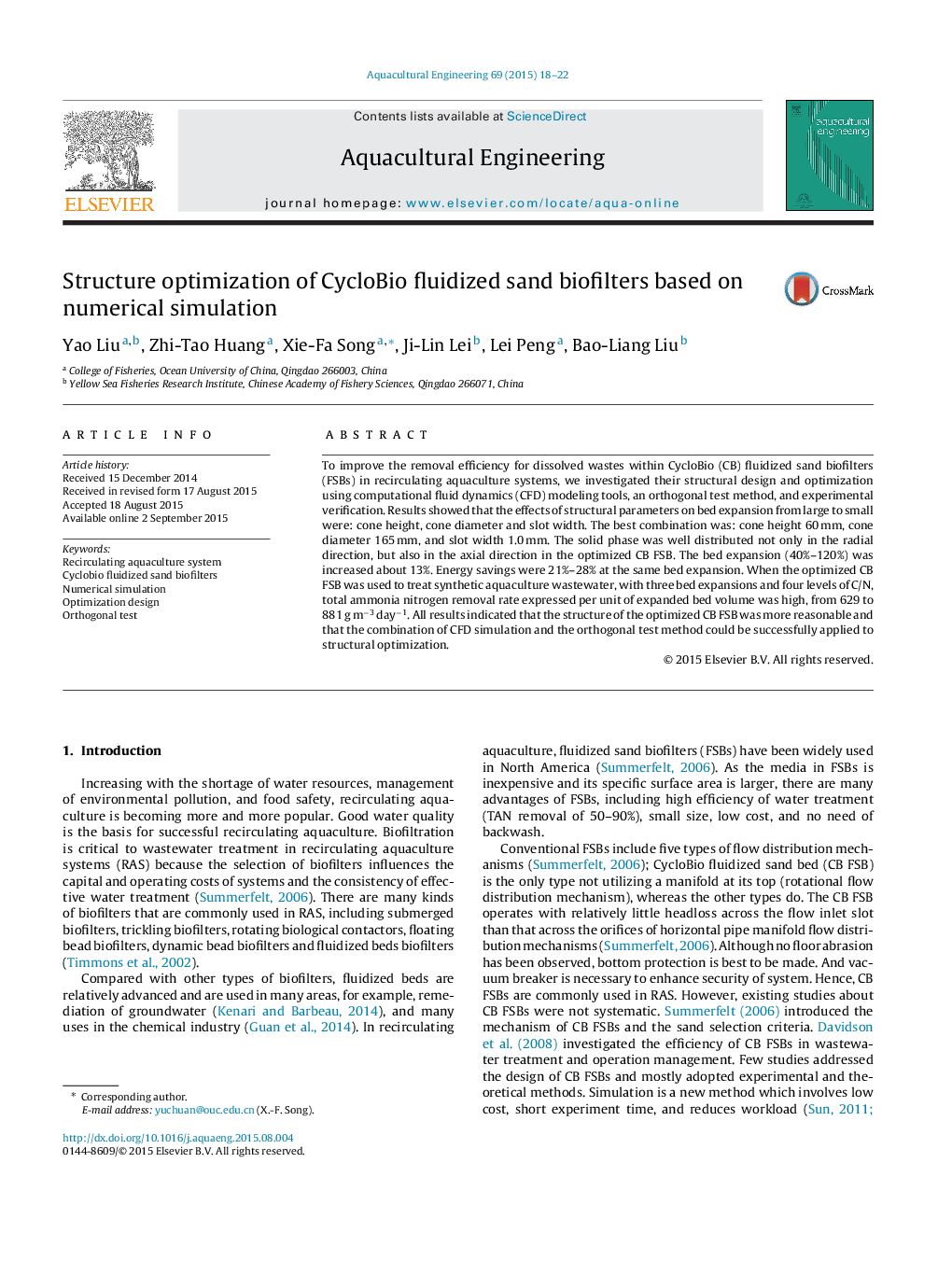| Article ID | Journal | Published Year | Pages | File Type |
|---|---|---|---|---|
| 4527140 | Aquacultural Engineering | 2015 | 5 Pages |
•Biofilters are critical to recirculating aquaculture systems. Comparing with other biofilters, the CB FSB is high efficiency of water treatment, small size, low cost, and no need of backwash.•Structure parameters are critical to CB FSBs. Good structure could reduce working cost and increase waste water treatment effect.•Simulation, as a new and potential method, is low cost, short experiment time, and reduces workload. It is partly instead of physical model.
To improve the removal efficiency for dissolved wastes within CycloBio (CB) fluidized sand biofilters (FSBs) in recirculating aquaculture systems, we investigated their structural design and optimization using computational fluid dynamics (CFD) modeling tools, an orthogonal test method, and experimental verification. Results showed that the effects of structural parameters on bed expansion from large to small were: cone height, cone diameter and slot width. The best combination was: cone height 60 mm, cone diameter 165 mm, and slot width 1.0 mm. The solid phase was well distributed not only in the radial direction, but also in the axial direction in the optimized CB FSB. The bed expansion (40%–120%) was increased about 13%. Energy savings were 21%–28% at the same bed expansion. When the optimized CB FSB was used to treat synthetic aquaculture wastewater, with three bed expansions and four levels of C/N, total ammonia nitrogen removal rate expressed per unit of expanded bed volume was high, from 629 to 881 g m−3 day−1. All results indicated that the structure of the optimized CB FSB was more reasonable and that the combination of CFD simulation and the orthogonal test method could be successfully applied to structural optimization.
